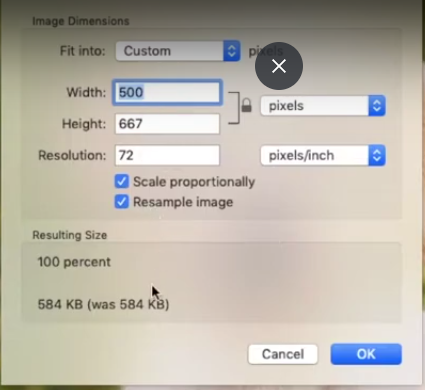Photography Terms
Image File Types:
PNG: Portable network graphics- Works best with web browsers, is editable (keep master file)
GIF: Graphic Interchange Format- Good for diagrams, line drawings, and animation
TIFF: Tagged Image File Format- good for photo storage
JPEG or JPG: Joint photographic experts group- used for final distribution of images (compressible)
Quality can deteriorate on Lossey things (JPEGs) but it will retain quality in Lossless types (PNG, GIF, TIFF)
An issue with JPEGs is that with repeated saving of the file, the image will become damaged. When you receive a JPEG that requires editing, it is best to save as a TIFF or a PNG to prevent further damage.
The quality of an image is it’s resolution or DPI (dots [pixels] per inch)
300 DPI is the industry standard for printing
What are pictures on the internet?
Web images are supposed to enhance a viewers experience, and they usually have a lower DPI to avoid long loading times. The average DPI for a web image is less than 100-72 DPI.
When you source images directly from an article the image is oftentimes blurred
Resizing vs. Resampling
Resizing is changing the size of a potential print without changing the resolution
Resampling is changing the resolution of the image
 The image above shows a typical editing screen for images.
The image above shows a typical editing screen for images.
JPEG RULES:
Do not compress below “8”
March 28th Quiz:
Image types functions
Lossey vs. Lossless
Resizing vs. Resampling
Wednesday, April 3rd:
Hex codes are a combination of 6 numbers and letters.
Thursday, April 11th:
Ransomware is a type of malware that holds a victim’s data pr device hostage, threatening to keep it locked— or worse— unless the victim pays a ransom to the attacker. (IBM)
Wednesday, May 1st:
Physics of a photo image
Shutter speed- a faster shutter can freeze action whereas a slower one will show blurring BUT a faster shutter allows less light into the camera
Exposure: The amount of light allowed into the camera that can be controlled through aperture or shutter speed (Controlled by S on camera, +- on iPhone)
Aperture/F-stop: this setting allows more or less light into the camera, measured by an f-number. The higher the F number the less light is entered into the camera.
Depth of Field: With enough light and proper aperture settings a camera can focus on foreground and background objects (high apertures)
ISO: How sensitive cameras are to light
Rule of Thirds: A strong, visually attractive image is divided into 3 parts and the subject is placed on the side
Perspective: Using unique positions from which to shoot from that open up a new world to the viewers
Subjective: Putting the viewer right there (POV)
Juxtaposition: Putting two opposite objects together to stress contrast
Cropping: Changing the shape, dimensions, or aspect of the photo which can in turn change it’s story
Backlighting: too much light from behind can darken the foreground. This can be a great effect if planned
Flash-fill: even if there is enough light for a good picture, using the flash can be a useful effect. Can be used to even out shadows on a sunny day